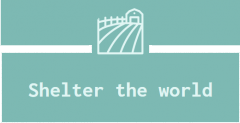Trust building exercises build confidence in an animal through repetition of known behaviours. This allows them to know what’s wanted or needed of them in a certain moment or situation, helping to eliminate the guess work. It can be exercises that we teach an animal to build a relationship and trust with their handler through familiar interactions.
Three pet rule
This builds trust and confidence by allowing animals the agency and choice whether to interact or not.
When they begin to understand that they have a choice, and the consequence of that choice is positive, they often begin to interact more on their own, understanding that they have the choice to move away or remove themselves.
This often reduces conflict, strengthens bonds, and helps animals to understand they do not need to display discomfort through escalating aggression sequences.
Trust and retreat
This exercise rewards an animal with distance, therefore removing conflict and teaching that choice is rewarding. It allows them to understand they can remove consent and choose to leave at any given moment without negative consequences.
Target touch
Target touch, or “hand touch,” builds confidence through repetition and helps an animal understand what to expect during an interaction, therefore removing conflict in many situations.
For example, when introducing a new person to a dog that may be fearful, by using a target touch they begin to understand exactly what’s expected of them and learn very quickly that their interaction will end with a reward. This makes the new person become less scary, reducing anxiety and fear in the dog.
Reading to an animal
Reading to an animal without invasive interaction can increase trust and allow for fear-free interactions, allowing the animal to interact at their choosing.
This quiet enrichment can reduce fear, anxiety and stress by utilizing calming sounds and the presence of a person while offering positive reinforcement.
Crate and carrier training
Crates can provide comfort and safety for an animal. When introduced slowly and positively, they can make actions like going to the vet, travelling in the car, or being left alone less stressful.
Ways to help to build positive associations with the crate are by leaving it out with a bed inside so it becomes familiar, feeding meals in the crate, providing enrichment items inside, and practicing having the animal in the crate for short lengths of time.
Keep in mind that crates and carriers aren’t suitable for all animals, as they may increase fear, anxiety and stress and even create it in some situations. Be cautious not to force the use of crates for animals when it is not a necessity.
Recall
Recall, or a “Come” cue, can build trust and increase communication. It can also increase confidence as the animal is consistently rewarded when they come over, making it an extremely positive experience.
Play
For dogs, playing is an important part of socialization and relationship building. Playing with a dog can increase trust if you go at their pace and make further interactions fun, positive, and less stress-inducing.
Games like fetch, tug, tag, and hide and seek can greatly benefit the dog as well as build trust in the relationship.
For cats, play therapy (structured play sessions) is a great way to reduce fear, anxiety, stress and frustration
It can help with fear behaviours by changing their focus to something else, aiding in confidence building, reducing overstimulation, and increasing the human-animal bond.
If this information was helpful, please help us continue to educate about pet health and well-being by making a donation. As a registered charity that does not receive annual government funding, the Ontario SPCA and Humane Society depends on the generosity of donors to change the lives of animals in need.
The post The importance of trust building exercises appeared first on Ontario SPCA and Humane Society.
Leave a comment




